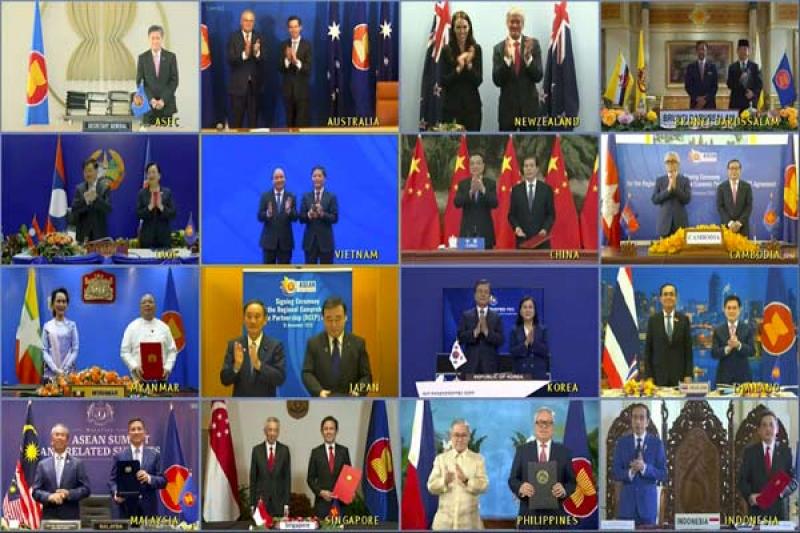Fifteen countries solidified their participation in the Regional Comprehensive Economic Partnership (RCEP) earlier this week. India opted to stay out after walking out of discussions in 2019. The new trading bloc, however, has made it clear that the door will remain open for India to return to negotiations. Let’s read in detail the trade deal in detail and why India has not joined the same.

The Regional Comprehensive Economic Partnership (RCEP) is an agreement between the member states of the Association of Southeast Asian Nations (Asean) and its free trade agreement (FTA) partners. It aims to cover trade in goods and services, intellectual property, etc. The deal was introduced during the 19th Asean meet held in November 2011. The RCEP talks started during the 21st Asean Summit in Cambodia in 2012 and was signed on November 15, 2020.
Importance and objectives
The 16 countries negotiating the RCEP together account for a third of the world gross domestic product (GDP) and almost half the world’s population, with the combined GDPs of China and India alone making up more than half of that. RCEP’s share of the world economy could account for half of the estimated $0.5 quadrillion global (GDP, PPP) by 2050.
RCEP aims to create an integrated market with member countries, making it easier for products and services of each of these countries to be available across this region.
The negotiations are focused on the following: Trade in goods and services, investment, intellectual property, dispute settlement, e-commerce, small and medium enterprises, and economic cooperation.
China’s role
RCEP was pushed by Beijing in 2012 in order to counter another FTA that was in the works at the time: The Trans-Pacific Partnership (TPP). The US-led TPP excluded China. However, in 2016 US President Donald Trump withdrew his country from the TPP. Since then, the RCEP has become a major tool for China to counter the US efforts to prevent trade with Beijing.
India’s stand
On November 4, 2019 India decided against joining the trade deal, saying it was not shying away from opening up to global competition across sectors, but it had made a strong case for an outcome which would be favourable to all countries and all sectors.
At the RCEP Summit, Prime Minister Narendra Modi said “the present form of the RCEP agreement does not fully reflect the basic spirit and the agreed guiding principles of RCEP. It also does not address satisfactorily India’s outstanding issues and concerns in such a situation.”
There was a fear in India that its industries would be unable to compete with China and Chinese goods would flood Indian markets. India’s farmers were also worried given that they would be unable to compete on a global scale.
How could India have gained from the deal
A section of Indian industry felt that being part of RCEP would have allowed the country to tap into a huge market. Some like pharmaceuticals, cotton yarn and the services industry were confident of making substantial gains by joining the deal.
Member States
Member states of Asean and their FTA partners are Brunei, Cambodia, Indonesia, Laos, Malaysia, Myanmar, the Philippines, Singapore, Thailand, Vietnam, China, Japan, India, South Korea, Australia and New Zealand.
This article is reproduced at telanganatoday.com